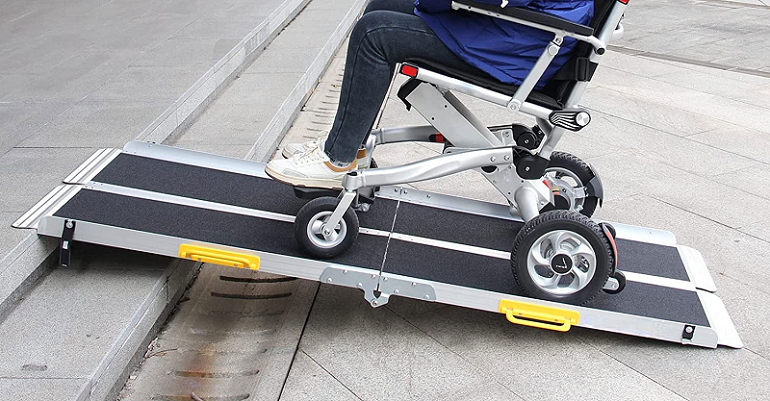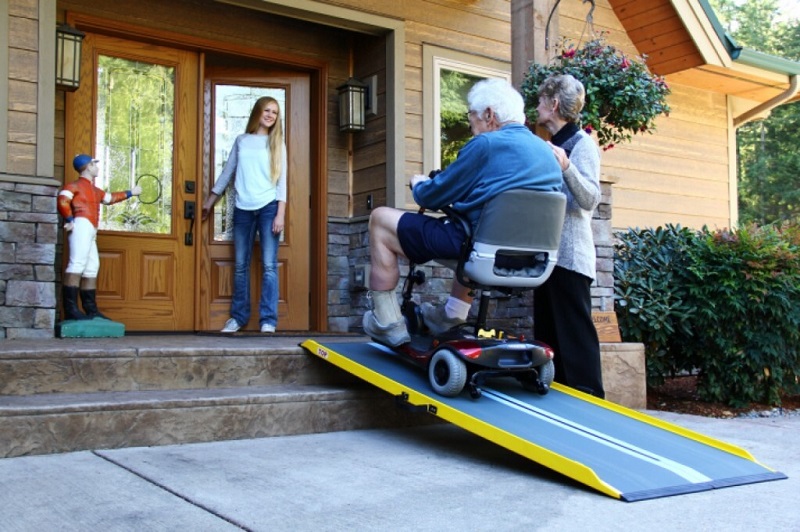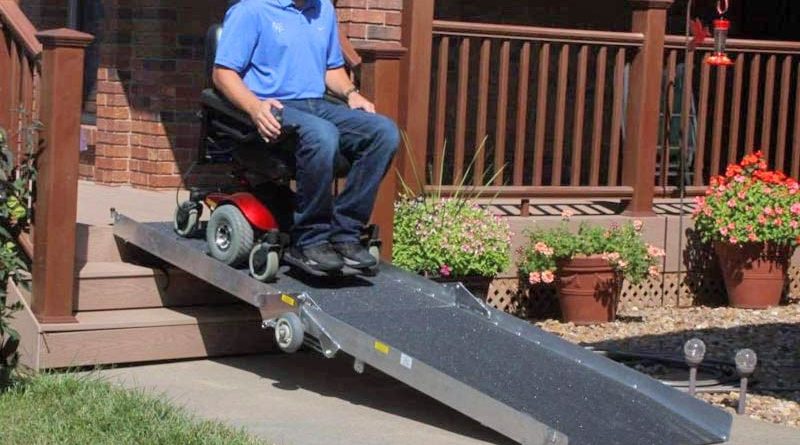A Guide to Choosing the Right Portable Wheelchair Ramp for Your Needs
If you have a disabled close friend or family member, it’s important to ensure their well-being. One crucial aspect of their care revolves around mobility and accessibility. This is where a portable wheelchair ramp can be a game-changer, breaking down barriers and opening a world of possibilities. In this guide, I’ll walk you through everything you need to know to select the perfect ramp for your unique needs.
Length and Slope

The length and slope of the ramp are two game-changing factors you can’t afford to ignore. If you’re dealing with just a few steps or a small elevation change, consider a durable aluminium 3 ft wheelchair ramp. It might sound short, but it can make a world of difference! This is all you need for easy access in and out of buildings or vehicles. It’s compact, portable, and perfect for those on-the-go adventures. If you’re dealing with a higher elevation change, say, a 2-foot rise or more, you’ll need a longer outdoor wheelchair ramp.
Now, here’s the scoop on the slope – it’s a crucial one! You want a tool that offers a comfortable incline, making it easy for the wheelchair to ascend and descend. Steeper slopes are a bit tricky and may not provide the best experience for your loved ones. The slope determines how steep or gradual the incline is, and you need to get this just right.
For a 3 ft wheelchair ramp, for example, consider the rise it needs to overcome. The general rule is that for every 1-inch rise, you should have 12 inches of ramp length. This ratio keeps the slope safe and manageable for wheelchair users.
Weight Capacity
You want to make sure that the model you choose can comfortably support the weight of the wheelchair user, the wheelchair itself, and any additional equipment or accessories. The last thing you want is a ramp that’s not up to the task and poses a safety risk. So, when you’re checking out different designs, pay close attention to their weight capacity. You can usually find this in the product specifications or details.
Weight capacities can vary depending on the type and material of the product. For example, an aluminium wheelchair ramp will often have a higher weight capacity compared to portable plastic ones. It’s essential to know the weight of the wheelchair user and the wheelchair to ensure you choose a design with a suitable weight capacity. If you’re unsure about the exact weight, it’s always a good idea to go for a model with a higher weight capacity than you think you’ll need.
Accessibility
You want something that’s easy to set up and use. You shouldn’t be struggling with complicated instructions or heavy lifting when you’re on the go. Look for designs that are lightweight, foldable, and user-friendly. You should also consider the different places where you’ll need to use this tool.
Whether you’re looking for wheelchair ramps for vans, homes, public spaces, or on your outdoor adventures, you want a tool that’s versatile and adaptable. Think about the various surfaces and heights you’ll encounter – from curbs to steps to uneven terrain. Your ramp should be up for the challenge and provide accessibility in any situation.
Oh, and don’t forget about storage and transportation! You want a tool that’s easy to store when not in use and can fit in your car or wherever you need it to go. Portability is the name of the game, and you want a ramp that’s ready to roll with you wherever life takes you!
Safety Features

When it comes to safety features, you should provide an extra layer of protection for your loved ones. So, keep these points in mind when buying a portable wheelchair ramp:
- First and foremost, non-slip surfaces are a must! You want a tool that offers a solid grip for the wheelchair wheels, even in wet or slippery conditions;
- Next up, consider the edges of the ramp. Look for models with smooth and rounded edges or edge protection to avoid any tripping hazards. This will create a seamless transition for the wheelchair, so it rolls on smoothly without any bumps along the way;
- Look for models with secure attachment options like safety straps or grip pads to keep it firmly in position. The last thing you want is a wobbly incline that adds unnecessary stress to your adventures;
Durability
You want a model that’s well-built and has long-lasting performance. Pay attention to the joints, hinges, and connections – they should be sturdy and reliable, ensuring that it stays in top shape for the long haul. A durable ramp can handle the elements without a hitch.
Whether it’s rain, shine, or even a little snow, you want a tool that won’t rust, warp, or lose its grip. After all, adventures aren’t limited to sunny days! It should also be easy to fold and carry, so that it’s a breeze to take on your travels. You want something that’s ready to roll with you wherever you go, without adding any extra weight to your load.
How Safe Are Portable Wheelchair Ramps?
Portable ramps provide a smooth and sturdy transition for wheelchair users over steps, curbs, or other small obstacles. Most of them are made of lightweight yet durable materials like aluminium, which strikes a balance between being easy to carry around and providing a stable surface. Some use non-slip surfaces to prevent accidents, and that’s always a good feature to look out for.
When setting up the ramp, make sure that you place it on a flat and stable surface. Avoid using it on uneven or slippery ground, as this can lead to tipping or slipping hazards. If the ramp comes with safety features like side rails or guardrails, use them to prevent the wheelchair from veering off the edges.

